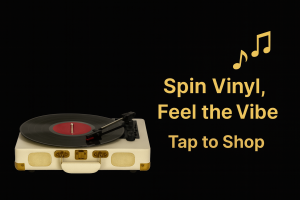“One Headlight” feels like a late-night drive through memories you can’t quite leave behind.
The moment those opening chords hit, you’re transported—maybe to a quiet highway, maybe to a past version of yourself, maybe to a place that never really existed outside of this song.
It’s the sound of exhaustion and hope tangled together, wrapped in a voice that’s been through something.
Classic rock artists have given us anthems of rebellion and love, but this one?
It’s for the ones who keep moving forward, even when the road ahead is dim.
- Writer: Jakob Dylan
- Performed by: The Wallflowers
- Album: Bringing Down the Horse (1996)
- Producer: T-Bone Burnett
📝 Background & Meaning:
“One Headlight” was written by Jakob Dylan, the lead singer and primary songwriter of The Wallflowers.
Released in 1996 as the second single from their breakthrough album, Bringing Down the Horse, the song became a defining anthem of ’90s rock and remains the band’s most iconic hit.
The song explores themes of loss, disillusionment, and finding resilience in the face of despair.
While many have speculated on the meaning behind the lyrics, Dylan has clarified that the song is not about death in a literal sense, but rather about the death of ideas, dreams, or aspects of oneself.
Jakob Dylan described the song as a metaphor for trying to move forward in life with limited resources and fading hope—hence the imagery of driving with “one headlight.”
It captures a sense of brokenness and frustration, yet it’s tinged with a stubborn determination to keep going.
🎤 Key Themes:
- Loss and Grief: The song grapples with the emotional aftermath of loss—whether it’s a person, a dream, or hope itself.
- Resilience: Despite overwhelming despair, there’s an undercurrent of determination to move forward.
- Isolation and Loneliness: The imagery of a car with “one headlight” symbolizes a solitary and imperfect journey.
- Disillusionment: The lyrics reflect a sense of frustration with life’s struggles and setbacks.
🎧 Notable Lyrics:
“Come on try a little / Nothing is forever / There’s got to be something better than in the middle.”
- Reflects a yearning for change and hope amidst stagnation.
“Well, this place is old / It feels just like a beat-up truck.”
- Creates a vivid image of weariness and emotional exhaustion.
“Me and Cinderella / Put it all together / We can drive it home / With one headlight.”
- The central metaphor suggests trying to move forward despite brokenness and limited visibility.
🎸 Musical Highlights:
- Moody Guitar Riffs: The song features a signature guitar riff that sets a melancholic and reflective tone.
- Jakob Dylan’s Raspy Vocals: His soulful and gravelly voice adds emotional weight to the song.
- Atmospheric Production: The subtle layers of organ and textured guitars create an ethereal and contemplative mood.
- Dynamic Build-Up: The verses are soft and introspective, building into a soaring, emotional chorus.
- Memorable Melody: The chorus is instantly recognizable and easy to sing along to.
🌍 Cultural Impact:
- “One Headlight” won two Grammy Awards in 1998: Best Rock Song and Best Rock Performance by a Duo or Group with Vocal.
- It became one of the most-played rock songs of the ’90s and remains a staple on classic rock and alternative radio.
- The song is widely regarded as The Wallflowers’ signature hit and a defining track of ’90s alternative rock.
- Its introspective lyrics and cinematic imagery continue to resonate with listeners, making it a timeless anthem of perseverance.
- The song has been used in movies, TV shows, and retrospectives about ’90s rock culture.
🎤 “One Headlight” Fact:
- Jakob Dylan is the son of legendary singer-songwriter Bob Dylan, but he’s always been adamant about carving out his own musical identity.
- The song’s famous line about “one headlight” was inspired by Dylan’s experiences driving through the night in a broken-down car.
- Despite the song’s commercial success, Jakob Dylan rarely discusses its deeper meaning, preferring to let listeners form their own interpretations.
🔑 What It Represents:
“One Headlight” isn’t just a song—it’s a haunting meditation on loss, resilience, and the imperfect journey of moving forward in life.
It represents:
- The struggle to push forward despite brokenness and despair.
- The bittersweet beauty of resilience and hope.
- A defining moment in ’90s alternative rock music.
- The emotional weight of personal and universal struggles.
With its melancholic guitar riffs, introspective lyrics, and soulful vocal delivery, “One Headlight” remains a timeless anthem for anyone navigating loss, disappointment, or the search for meaning in challenging times. 🎶🚗💔
The Timeless Appeal 🕰️✨
Some songs hit in a way that never fades—this one lingers.
“One Headlight” isn’t just about what’s being said; it’s about how it feels.
The slow, steady drumbeat, the aching rasp of Jakob Dylan’s voice, the way the chorus carries a weight that sits somewhere between defeat and determination.
It’s music that doesn’t just play—it settles in, stays with you, and resurfaces when you least expect it.
For those who heard it in the ‘90s, it’s a snapshot of a time when alternative rock ruled the airwaves and songs had a way of feeling personal.
For new listeners, it’s proof that not every great song has to shout—sometimes, the quietest ones cut the deepest.
Classic rock artists left behind songs that told stories, and this one?
It reads like a diary entry you forgot you wrote, filled with words that still somehow know exactly where to find you.
The Final Note 🔚🎶🔥
“One Headlight” doesn’t fade into the background—it sinks in.
Maybe it’s the melody, maybe it’s the way it captures that feeling of being stuck but still moving, or maybe it’s because everyone, at some point, has driven home with more weight in their chest than they left with.
That’s why it still plays.
It’s not just about nostalgia—it’s about persistence, about finding something better, even when all you’ve got is a broken headlight and a little bit of hope.

